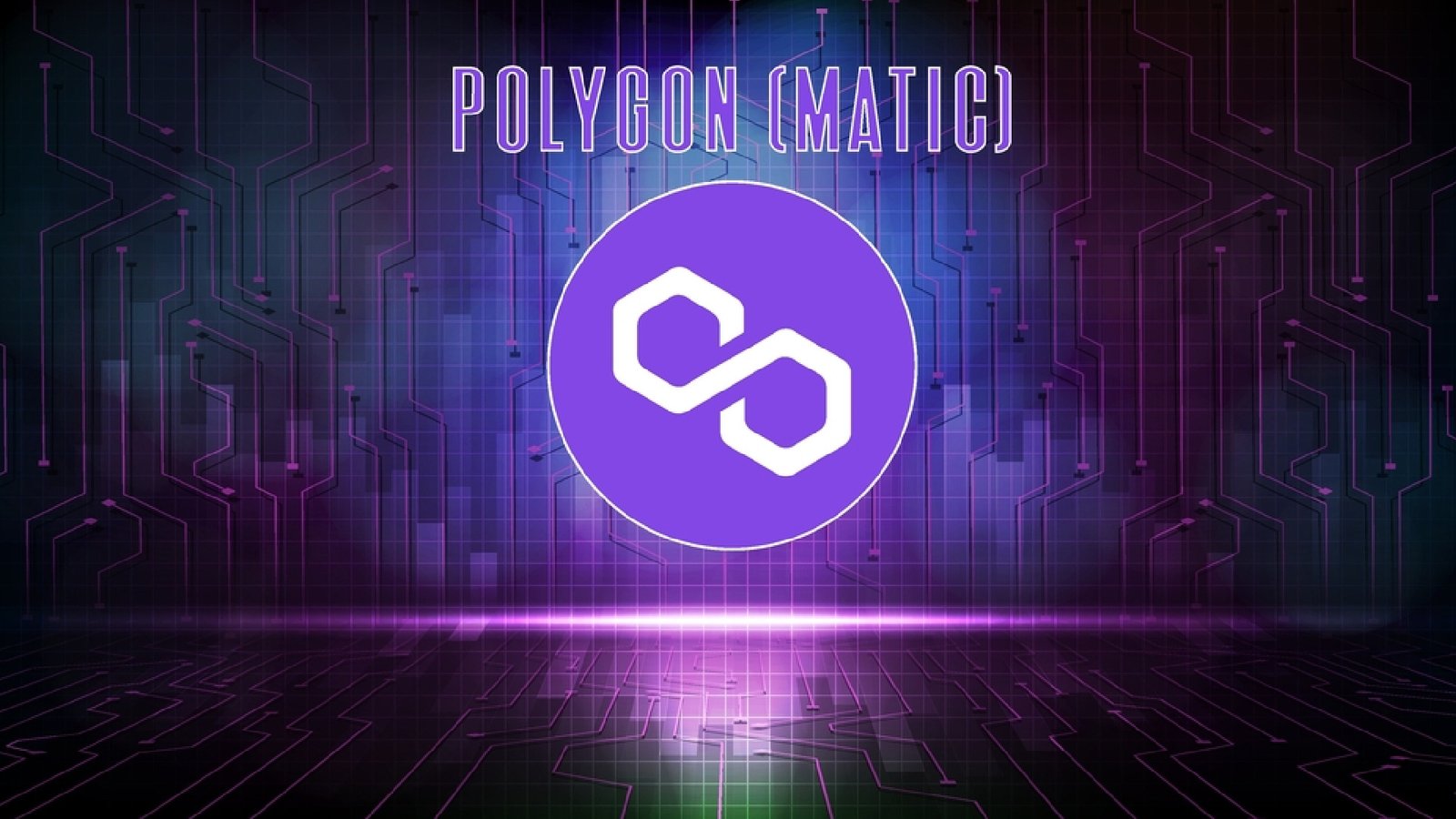
The Polygon layers of protocols were first founded to deal with the scalability concerns of Ethereum. The Polygon network processes the transactions on a distinct, Ethereum-compatible blockchain to cope with the network’s flaws.
After additional processing, Polygon transmits the transactions back towards the main Ethereum chain. The load work on Ethereum’s network is mitigated by this strategy. By accomplishing this , Polygon may speed up the transactions and reduce the expenses to below a penny.
To state it more simply, Polygon previously termed a Matic network, offers a simple foundation for fresh and up-to-date blockchain projects to run on Ethereum without experiencing scaling problems. A proposed solution known as the Polygon (MATIC) promises to tackle some of the Ethereum’s (ETH) unique characteristics. Even its brand presents it as “Ethereum’s internet of blockchains.”
Polygon, formally termed Matic Network, was set up in 2017 and is a well-known cryptocurrency that often appears in the top 15 by market worth. Users do not need to be concerned about congestion on the network while dealing with any decentralized application (DApp) using Polygon. More than 7,000 decentralized apps (dApps), or applications that operate without agents, are supported by Polygon.
The Polygon platform ties Ethereum-based projects and operates on the Ethereum blockchain. While preserving the security, seamless integration, and fundamental benefits of the Ethereum blockchain, using the Polygon platform may enhance the portability, scaling, and autonomy of a blockchain enterprise.
Key Points:
- The MATIC token-powered Polygon network has been launched to connect and build Ethereum-compatible programmers and blockchains.
- MATIC tokens are utilized to regulate, safeguard, and reimburse the costs of transactions on the Polygon network.
- To effectively operate the platform, Polygon utilizes an altered proof-of-stake consensus approach.
Who Owns the Polygon?
Due to its highly skilled development team, Polygon has unambiguously proven its position as one of the most potential Ethereum scaling projects. The team’s collective expertise continues to be the catalyst for the development of Polygon. The Matic network’s developers deserve praise for recognizing the growing needs of modern crypto companies. The subsequent part looks at the people in charge of one of the projects with the fastest pace of development.
MATIC and Polygon are Interchangeable?
What separates a polygon network from a MATIC network? The project used to be known as Matic Network up until switching its name to Polygon in February 2021. Plasma sidechains constituted the sole major outcome of the Matic network.
Similarly to the side chains, plasma chains provide a better security system in return for ease. Plasma chains, in comparison to the sidechains, publish their “root” on Ethereum layer 1 and function with the assumption that its consensus system could fail. While providing more security, this design precludes these chains from performing advanced procedures. Polygon chose to stay with the ticker MATIC for its native coin when the project was nourished. The Matic network converted into Polygon as a consequence of that.
How Polygon Operates:
There is a particular maximum number of transactions per second that the network of Ethereum can execute. For the fundamental layer, the throughput rate is around 14 transactions per second. On Ethereum, there are transaction costs referred to as gas fees for each transaction.
When the network becomes jammed, fuel costs rise, and on Ethereum, they can soon approach $50 to $80 or even. This is an important issue. Ethereum remains completely out of grasp for most people since each transaction needs a single payment of more than $50.Furthermore slowed down by network congestion, the Ethereum blockchain discourages users from interacting with smart contracts.
Anyone who uses decentralized finance (DeFi) may quickly pay fees of a few hundred dollars as a consequence of these difficulties.
How does Polygon accomplish this then, cheaper? Scaling systems like Polygon handle transactions on side chains to reduce gas costs. Compared to Ethereum, which can only manage about 17 transactions per second, Polygon has a cap of 65,000.
Furthermore, Polygon can offer these fees to users for just a few bucks. Comparing that cost to Ethereum’s average transaction fee, which is about $15. Users may choose the optimal scaling solution for their use because Polygon offers a range of protocols, including the zero-knowledge (zk) proof variety. Zk proofs are a type of cryptographic primitive used in a way of proving the validity of a statement to a third party.
The tedious work is done by validation methods, which review new transactions before them on the blockchain. In exchange, they might get a percentage of the fees and the newly developed MATIC. Running a full-time node (or computer) and staking your own MATIC are prerequisites for being a validator. You can lose some of your staked MATIC if you execute a mistake or act intentionally (or even if your internet connection is unstable).
Via an accurate validator, delegators indirectly stake their MATIC. This is a far more violent form of staking. But the inquiry is still crucial because you could forfeit any or all your staked MATIC if the validator you choose conducts scams or blunders.
How is the Polygon Network Utilized?
The Polygon network provides many of the same capabilities as the leading Ethereum network, but with fees that are frequently only a few hundredths of a cent. Try decentralized exchanges like QuikSwap or SushiSwap, yield-generating loan and savings protocols similar to Aave, NFT marketplaces like OpenSea, or even “no-loss prize games” like Pooltogether.
You must send a certain amount of cryptocurrency to a compatible crypto wallet, like the Coinbase Wallet, to the Polygon network. Then you can “bridge” some of your cryptocurrency to the Polygon network; stablecoins are an accepted option for this. For all of the transactions, you’ll also need to bridge some MATIC, but considering fees are so low as well, even one dollar’s worth is plenty.
The Polygon network is an excellent means for trying out DeFi protocols in the real world owing to its reasonably priced and very instant transactions. (Please keep in mind that DeFi can be exceedingly volatile; as a newbie, start small and refrain from investing more than you can afford to lose.)
What Levels Will Polygon Crypto Reach?
The 2022 Disney Accelerator, which focuses on novel types of tech, including augmented reality, non-fungible tokens (NFTs), and artificial intelligence as part of its future narrative endeavors, attracted attention when Polygon said it would join. Disney is now part of the list of well-known businesses using the digital currency platform, including Meta. On its Instagram platform, Meta wants to test digital collectibles and display NFTs.
Although it is impossible to anticipate the exact price of the MATIC token, some individuals are confident about the project’s future. Getting into Polygon. If everything is going smoothly, values on cryptocurrency marketplaces can vary quickly, which could present an obstacle for investors with short-term objectives.
If you consider Polygon may make a wise long-term investment, you ought to think about the risks and the competitors. Other Layer 2 scaling options, such as Solana (SOL) and Cosmos (ATOM), are available.
The project could also be impacted by internal risks, such as conflicts with the management group or the project. In December 2021, Polygon revealed that more than 800,000 MATIC devices had been hacked by attackers and that it gave away $3.46 billion in bug bounties to white-hat hackers who uncovered and reported security weaknesses.
How Does Polygon Benefit Ethereum?
Ethereum doesn’t stand in competition with Polygon. It is rn Ethereum and vice versa. The objective of Polygon is to use the Polygon network to construct an infrastructure that will facilitate the widespread use of Ethereum. As a consequence, Polygon relies upon Ethereum more than Ethereum does on Polygon. Given that Polygon is based on its blockchain, this is expected.
The main limitation is the chance that switching to Polygon for efficiency can reduce the value that Ethereum has gained. In some regions, value dilution can potentially prevent Ethereum from gaining more direct users. To give an example, Polygon strengthens Ethereum, which encourages more users to use the Ethereum network. The value of the Ethereum blockchain will rise as more users freely lock their funds there, regardless of the prospect of snatching total value locked (TVL) from Ethereum.
Polygon Token (MATIC) – What’s the Purpose of it?
The basic component of the Polygon system is the MATIC Polygon token. It is used for maintaining tokens that defend the Polygon network in addition to having been used for exchange payments. Since being changed its name, the Polygon MATIC token’s price has increased substantially in tandem with its application.
The covered supply of MATIC tokens is 10 billion, while there are now approximately 5 billion tokens in distribution. Most well-known centralized and decentralized exchanges, including some well-known companies like Binance, 1inch Exchange, and Coinbase Pro in the list, offer access to MATIC currency. Together, the crypto ecosystem is making it easier to buy Polygon (MATIC) tokens through the availability of both fiat and crypto payment methods. As reported by CoinGecko, the Polygon MATIC market has an absolute market value of $1.8 billion as of this writing. The value of a polygon MATIC token is currently approximately 0.36 USD.
Conclusion:
By reviewing Polygon MATIC’s features and workings, it can be concluded that this platform has been very effective in addressing the scalability problems with blockchains. Furthermore, a variety of blockchain developers can take advantage of the tools and capabilities supplied by the polygon platform, which gives developers access to customization opportunities, to build their decenized network.
The goal of Polygon (MATIC), a cryptocurrency and technology platform, is to link and develop blockchains and projects that are compatible with Ethereum. Investors may buy MATIC tokens on websites like Coinbase or Kraken. MATIC tokens are used for the governance and safety of the Polygon network in addition to paying transaction fees. Developers, new entrepreneurs, and regular clients will all benefit from Polygon’s solutions. The primary objective of Polygon is to build an IoT (Internet of Things) on the Ethereum blockchain. The project seeks to boost Ethereum’s audience to one billion without jeopardizing security or decentralization.
The method employed by Polygon differentiates it from other L2 solutions. Developers may select from a variety of Polygon’s services on a single network. This strategy gives developers more flexibility and control when determining the scaling solution that is suitable for their application. On Polygon, a developer can choose between zk-rollups or optimistic rollups. They may opt to use Polygon Avail instead, an extremely secure data availability blockchain for standalone chains, sidechains, and off-chain scaling solutions.
FAQs:
What Separates the Polygon Network From the Ethereum Platform?
Compared to Ethereum, Polygon can validate transactions faster, handling up to 700 payments per second as opposed to Ethereum’s average of 10. As a result of this, it has significantly lower gas fees—about $0.01 per trade when compared to the average Ethereum fee of $14 for an agreement on Uniswap v3 in 2022.
Does Polygon Outperform Solana?
If you want a platform with the most abilities, Solana is one of the most significant choices. On the contrary, Polygon is a superior choice if you require compatibility, a sizable user base, and access to the most widely used crypto apps. Keep in mind that Polygon used to be known as Matic to prevent confusion.
Is Polygon able to Handle $100?
No. As we previously mentioned, there is a remote possibility that Polygon will ever reach $100 in the near or midterm period. How far will MATIC develop by 2023? The anticipated greatest MATIC price at the end of 2023 is $0.93, according to our MATIC price projected for 2023.
Why is Polygon so Popular with Users?
Developers may rapidly and effectively create and deploy decentralized applications using Polygon, an Ethereum Layer 2 scaling solution. The program makes use of a system of side chains interlinked with the Ethereum blockchain itself. Transactions can now be handled extensively sooner than they previously were on the main chain.







